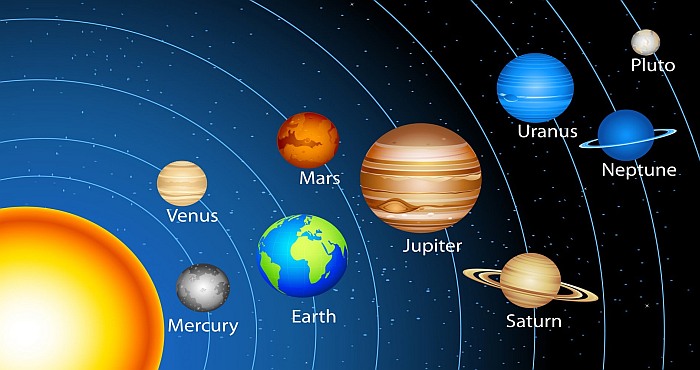
Our solar system is described as a star and all of the objects such as the meteoroids, comets, asteroids, moons and planets that move around it. Nearly all starts have their own planets —probably making countless number of other solar systems available in the Milky Way galaxy only.
The solar systems can as well consist of more than a star. If there are two stars, they are referred to as binary star. However, if there are three or more stars, they are called multi-star systems.
Home Solar System
This solar system can be found on the outside spiral arm of the enormous Milky Way galaxy. It comprises of the sun as well as all that orbits around it. This comprises of the eight planets and their natural satellites including immeasurable particles of smaller debris, comets, asteroids, the dwarf planets and their satellites and our moon.
The Size and Distance of the Solar System
It is noteworthy that solar system expands greatly beyond the eight planets that orbit the sun. On the other hand, it comprises of the Kuiper Belt that lies beyond Neptune’s orbit. This is a sparingly engaged ring of icy bodies, more or less smaller than the notable Kuiper Belt Object, dwarf planet Pluto.
Oort Cloud
This is produced of frosty pieces of space fragments with sizes of mountains and at times bigger, orbiting our sun for as far as 1.6 light years away. This particular crust of substance is chunky, expanding from 5,000 exorbitant units to 100,000 exorbitant units.
One astronomical unit aka AU is the distance all the way from the sun to Earth, or almost 150 million km or 93 million miles. The Oort Cloud is the border line of the gravitational influence of the sun. It is the palce orbiting objects can turn around and go back nearer to our sun.
Development of Our Solar System
Our solar system was developed from a dense cloud of interstellar dust and gas in approximately 4.5 billion years ago. Probably as a result of the shockwave of a close by exploding star known as supernova, the cloud collapsed. This dust cloud formed a solar nebula— a swirling, spinning disk of material, when it collapsed.
Order and Arrangement
The structure and order of arrangement of the planets and other bodies in our solar system is as a result of how the solar system was fashioned. Just rocky material could endure the heat when the solar system was young and very close to the sun. Therefore, the first four planets — Mars, Earth, Venus and Mercury — are referred to as worldly planets. They are diminutive with hard, rocky surfaces.
Discovery
In the early 17th century, The exploration of Galileo Galilei in the early 17th century involves making use of the newly created telescope powerfully supported the solar system conception of which all the planets, as well as Earth, rotate around a mid star — the sun. This was referred to as Copernican heliocentric theory during that period, and it was a revolutionary thought because the majority of all the people believed that the Earth was the core of the world.
We have learned a lot concerning our solar system and what lies further than it making use of mathematical, spacecraft and ground-oriented models, since that time.
